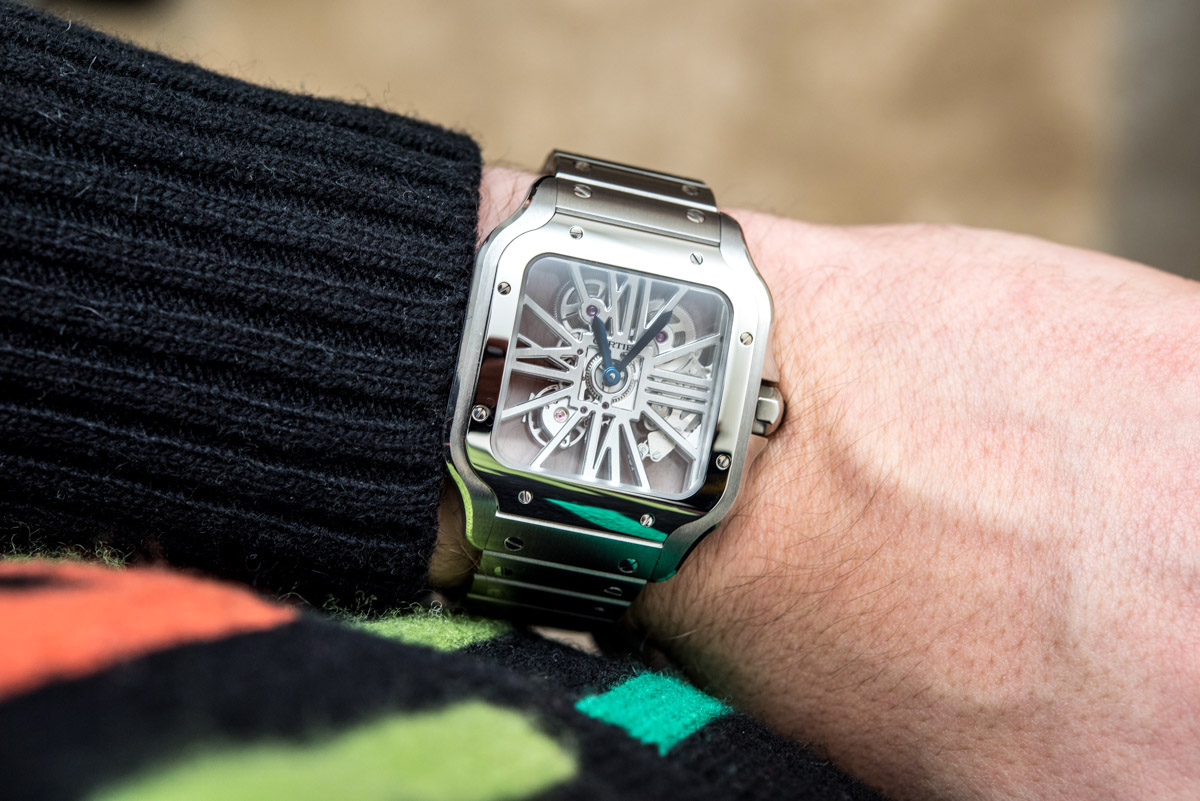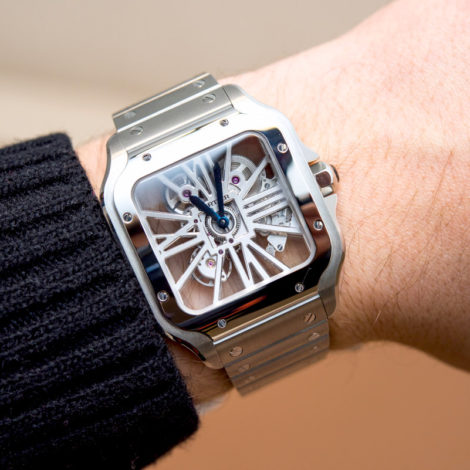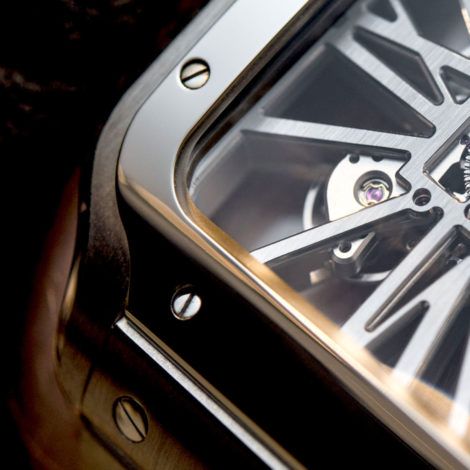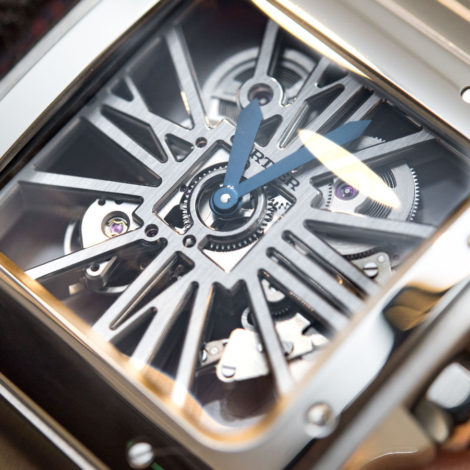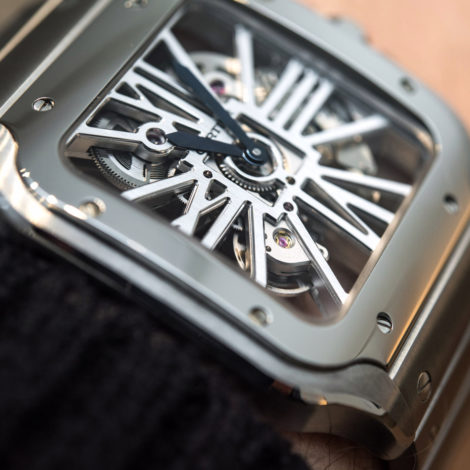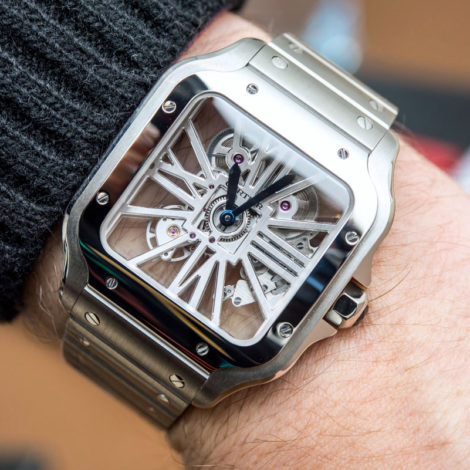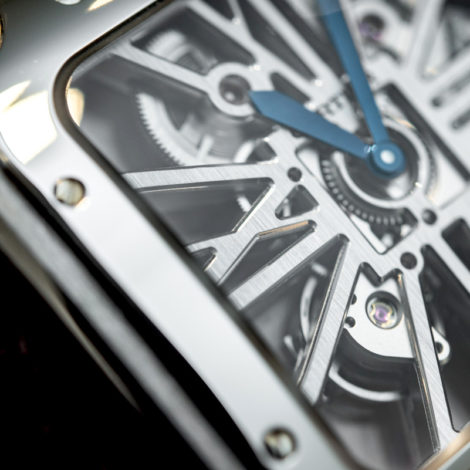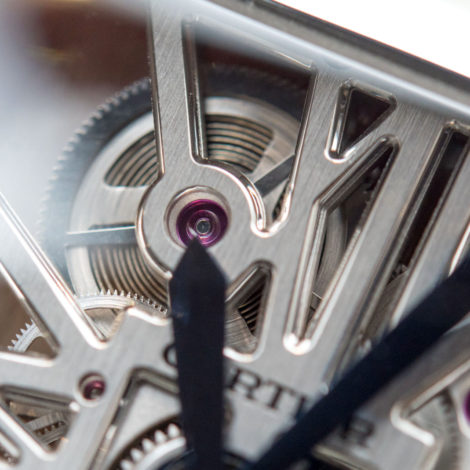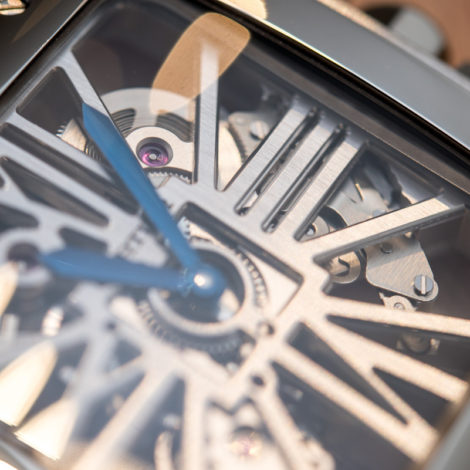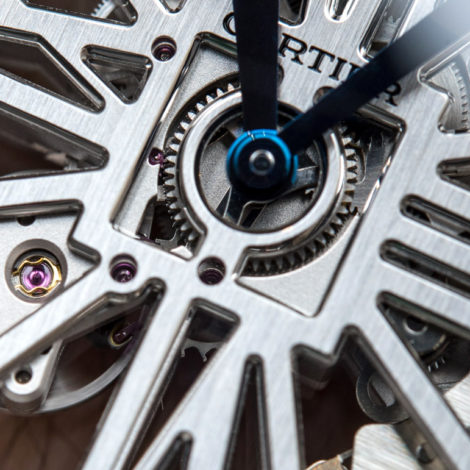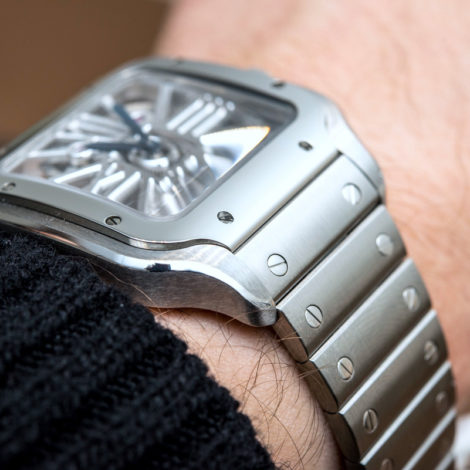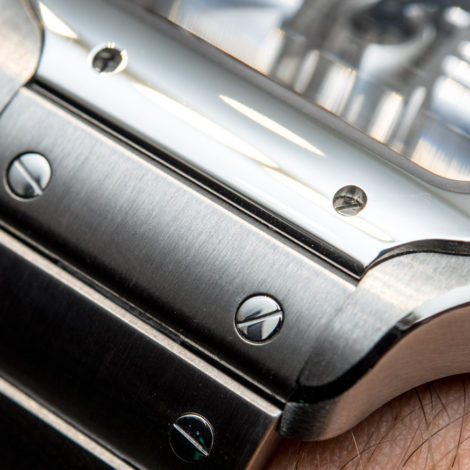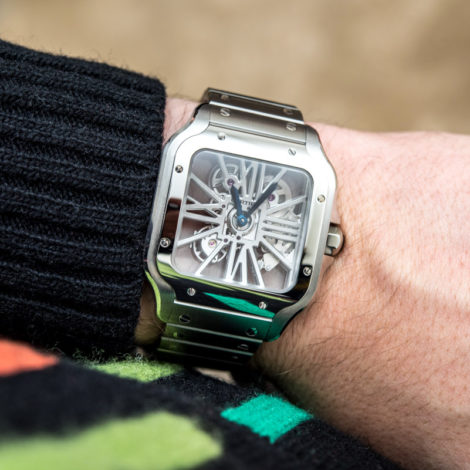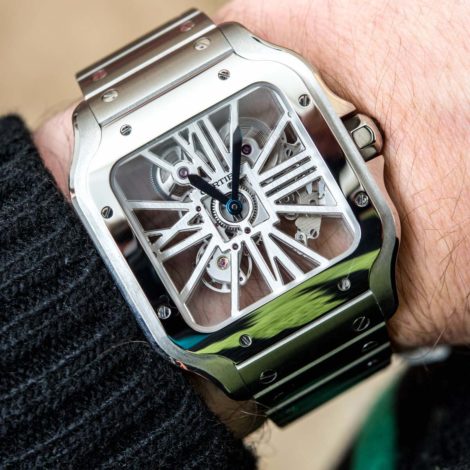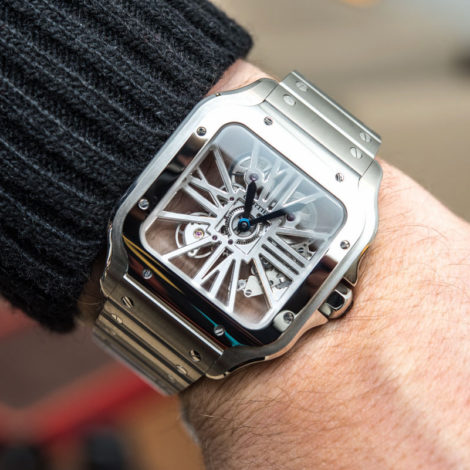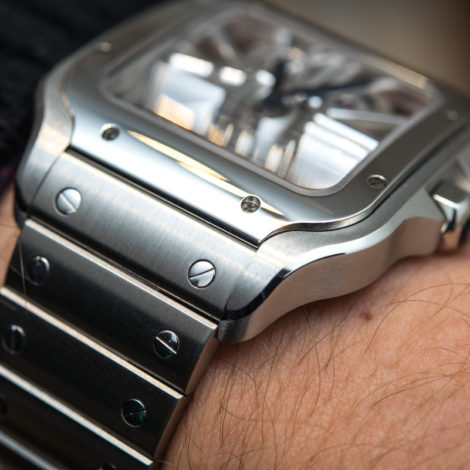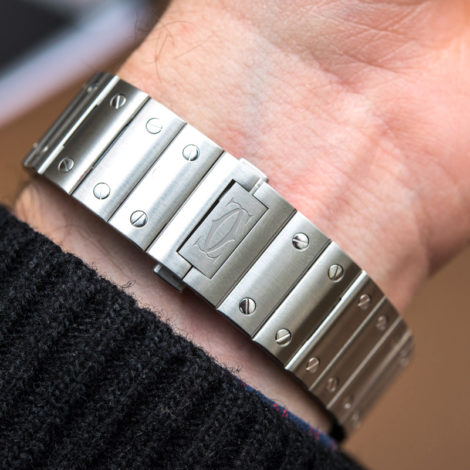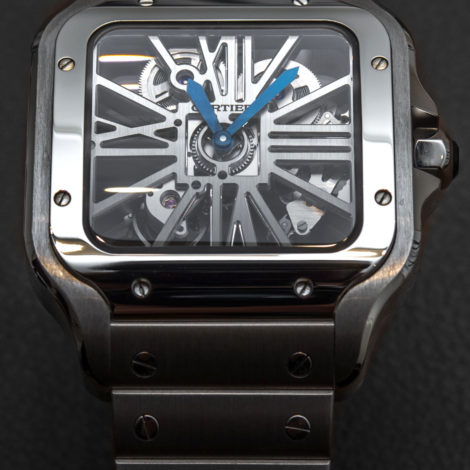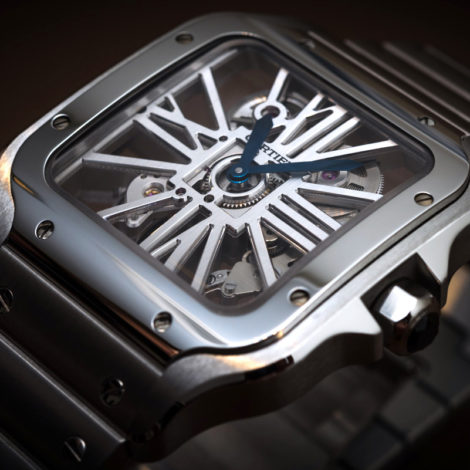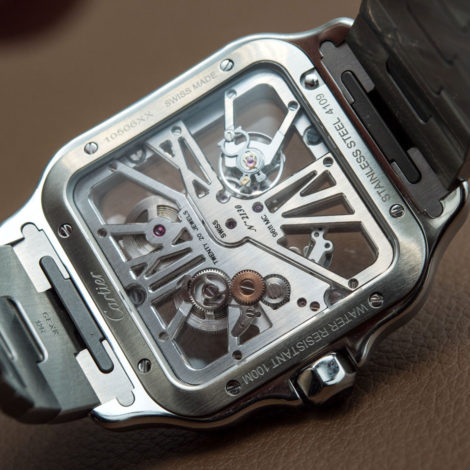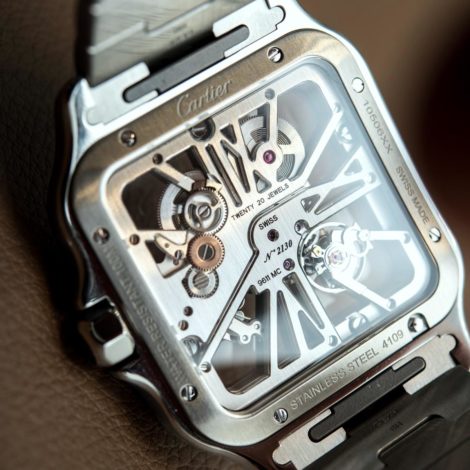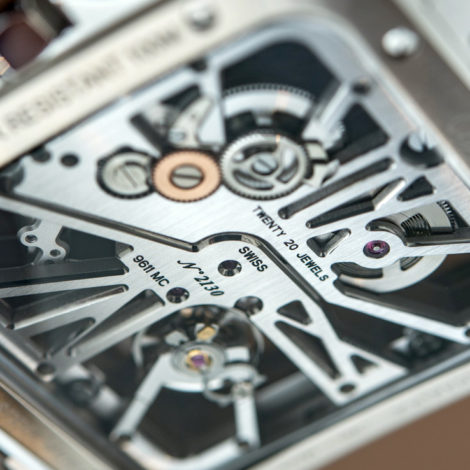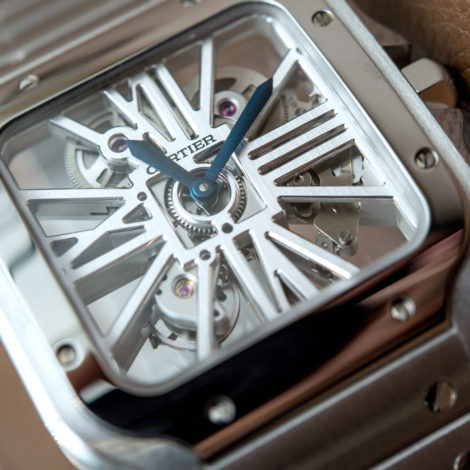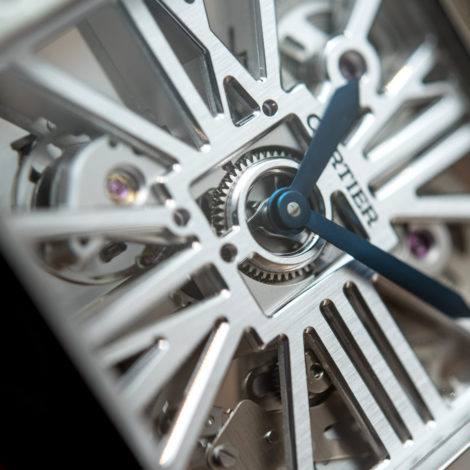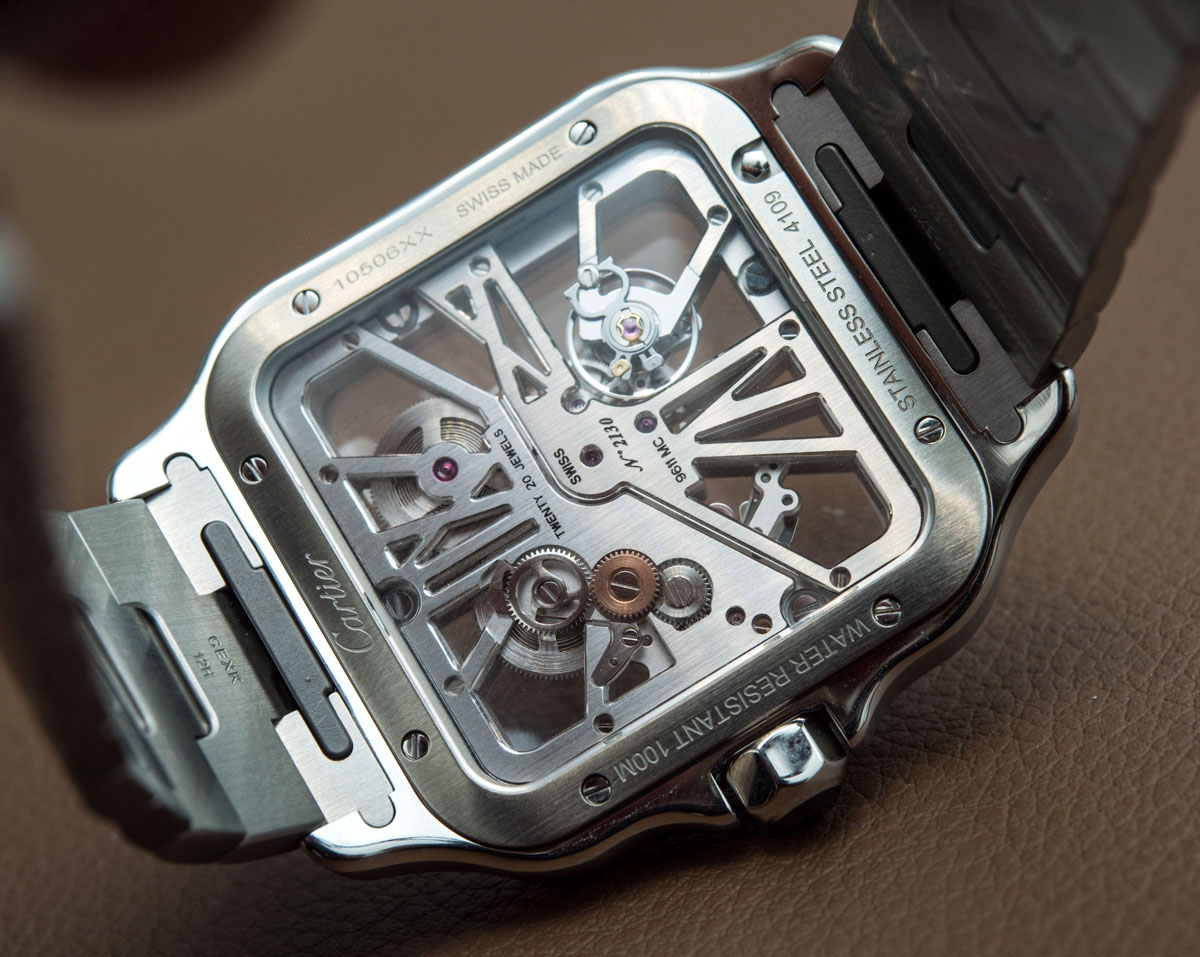
Now, onto a more subjective matter: proportions and wearability. Maybe this is simply because I fell awfully in love with the smaller Santos in red gold, but I find it hard not to see this Large model with its filigree dial and massive, bunker-like case odd, when mixed together. The watch felt heavy and flat and so while it sat nicely on the wrist, I was left confused as to why Cartier didn’t swap this movement into the smaller (i.e. “Medium”) Santos in steel that they also launched this year. Looking at the movement it clearly is a versatile and, therefore, small caliber. Look how close together everything is. Cartier was smart about this so that they could use this layout, albeit with resized bridges, in much smaller watches as well. This affection with such a massive case is a bit stuck in the past, I think, where brands, including Cartier’s own haute horlogerie department could create insanely complicated watches that were absolutely massive in size. This movement, even (or perhaps I should say: especially) in this skeletonized form would have looked more neat and proportionate with less shiny metal surrounding it.
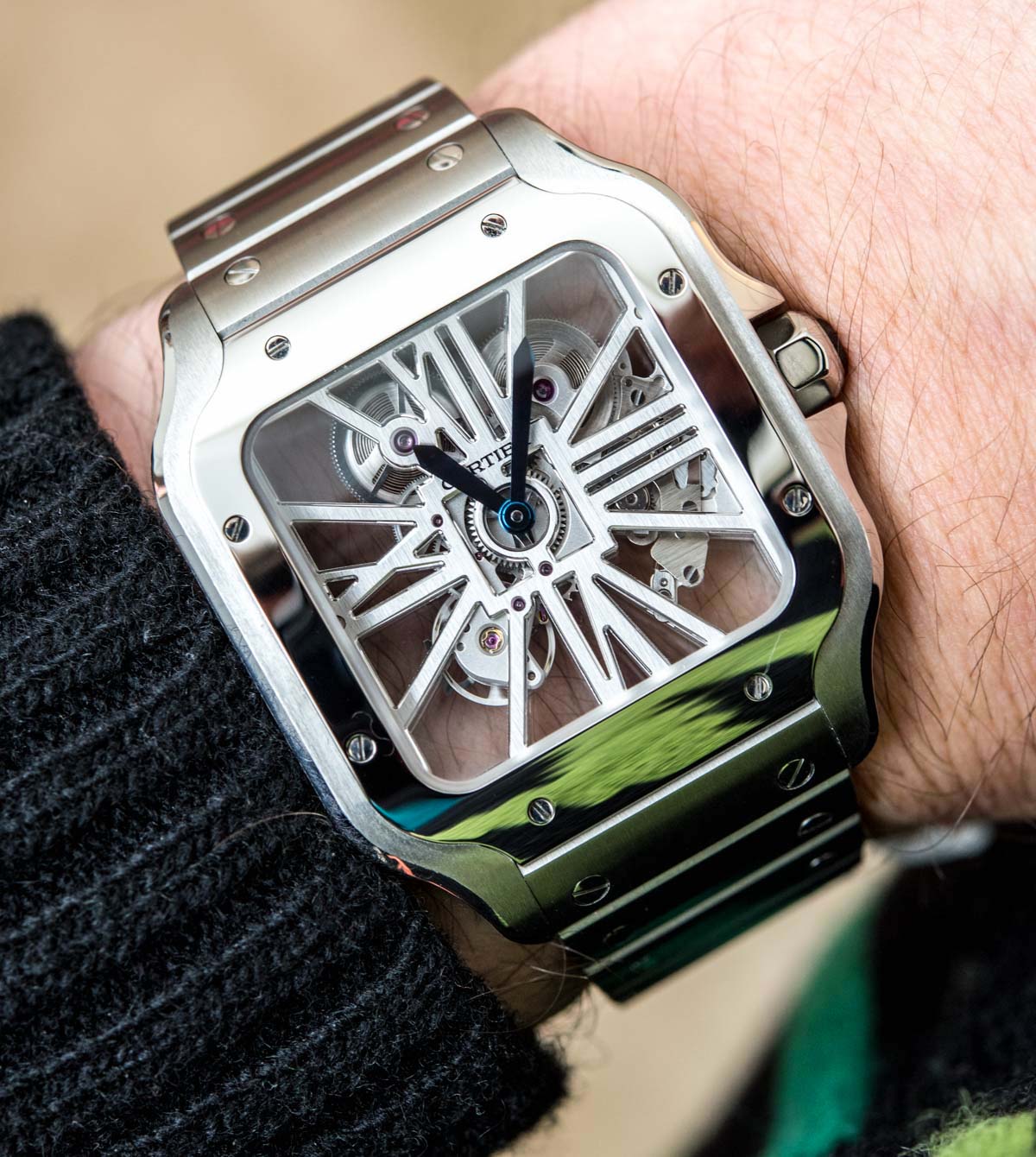
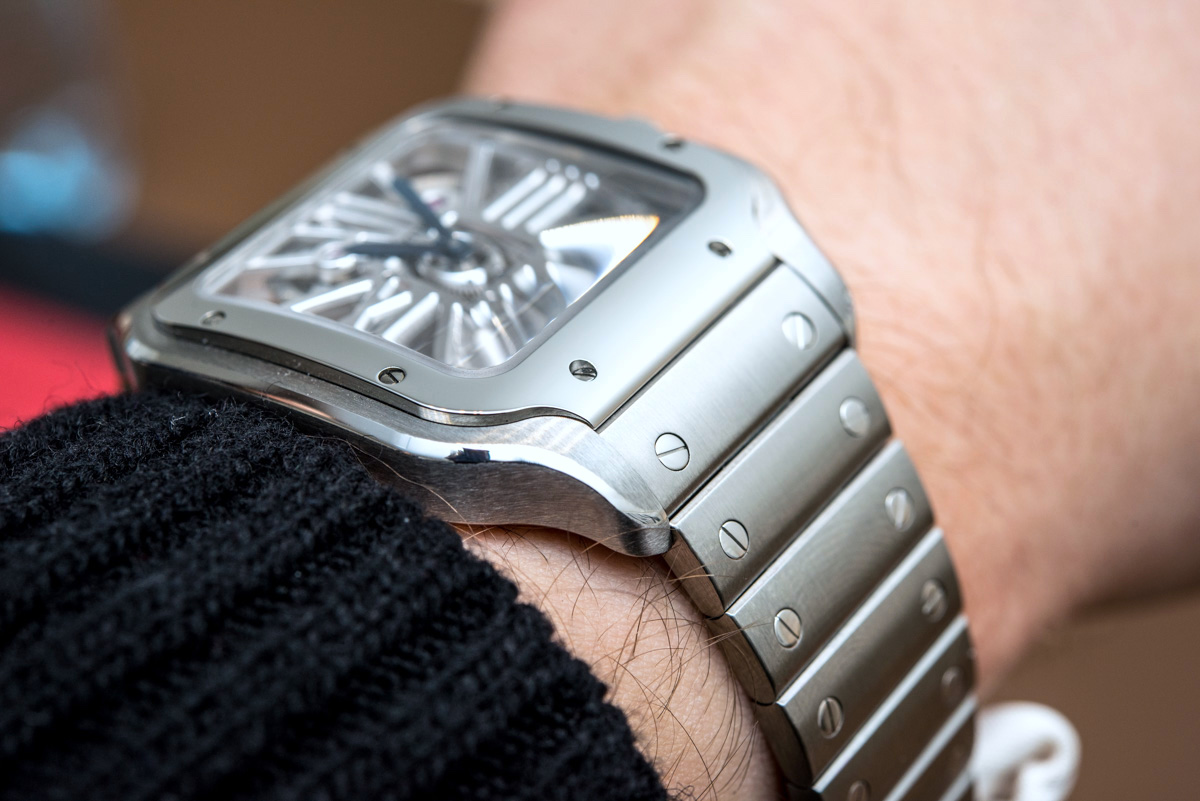
The new-for-2018 Santos line-up impressed us with its high-quality case with neat finishing and plenty of creative and fascinating details – like the integration of the bezel into the case, the neatly curved and polished edge along the case profile, and the new QuickSwitch and SmartLink system that allows for tool-free strap changing and bracelet adjustment (more details here). As I’ve said above, one could perhaps expect a bit more here and there when it comes to the case and bracelet, but another way of looking at it (that rarely ever works but it kinda does here) is that the base model’s case and bracelet are so good, they don’t stand out quite as much on a watch that costs literally four times as much.
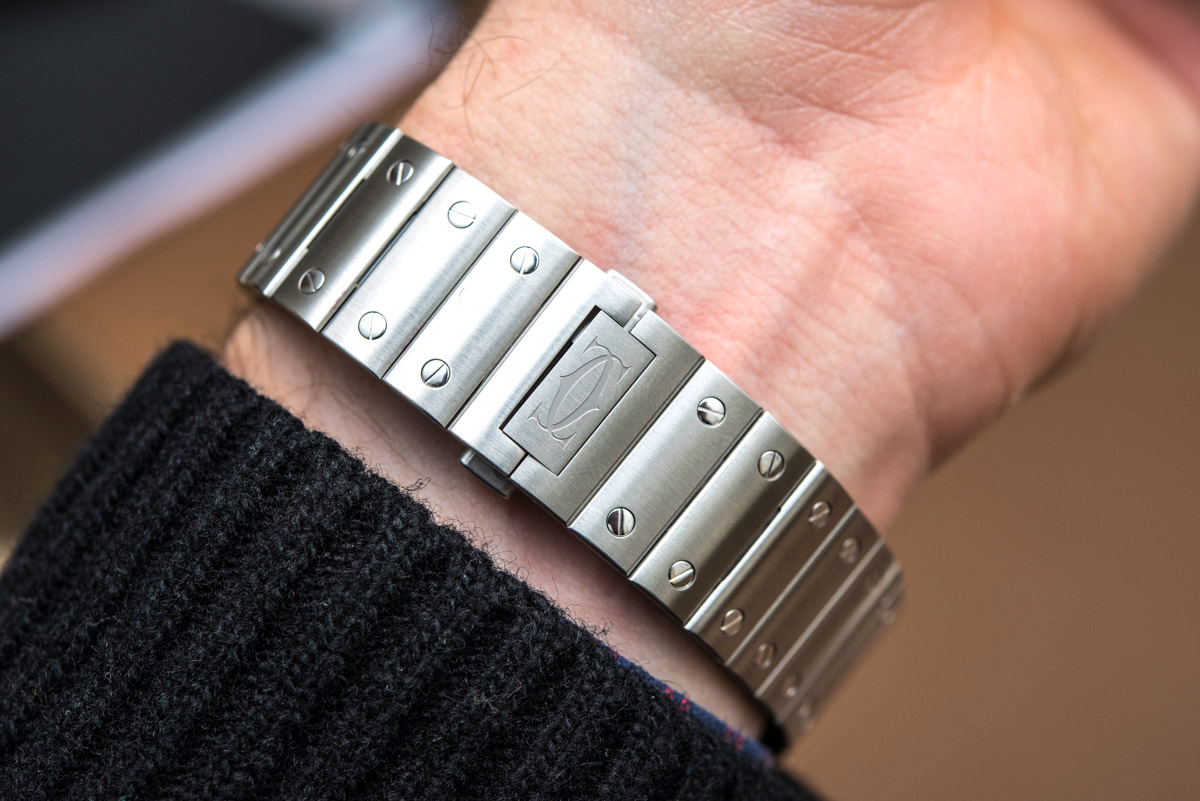
All in all, this really is a rather bold way of dressing up the Santos – one of the strongest Cartier collections now, as far as I’m concerned. The case is of the “Large” type – Cartier’s affair with clothing-inspired size definitions I hope to grow to accept someday. “Large” in this instance means a 39.8mm wide and 9.08mm thick case – lug-to-lug it’s definitely above 50mm though, making for what is indeed a substantial, or should I say “Large” footprint. The hands remain petite – a Cartier trait that I also wish was a thing of the past – especially on watches that have “Large” in their name. The 9611 MC caliber has an impressive 70-hour power reserve, so I guess it should have the torque to carry larger hands too. I have for long been a fan of how Cartier integrates tiny Cartier text into the fine print of its Roman numerals – perhaps the logo would’ve been better placed on the 7 or 8 o’clock index, but I’m nitpicking again.
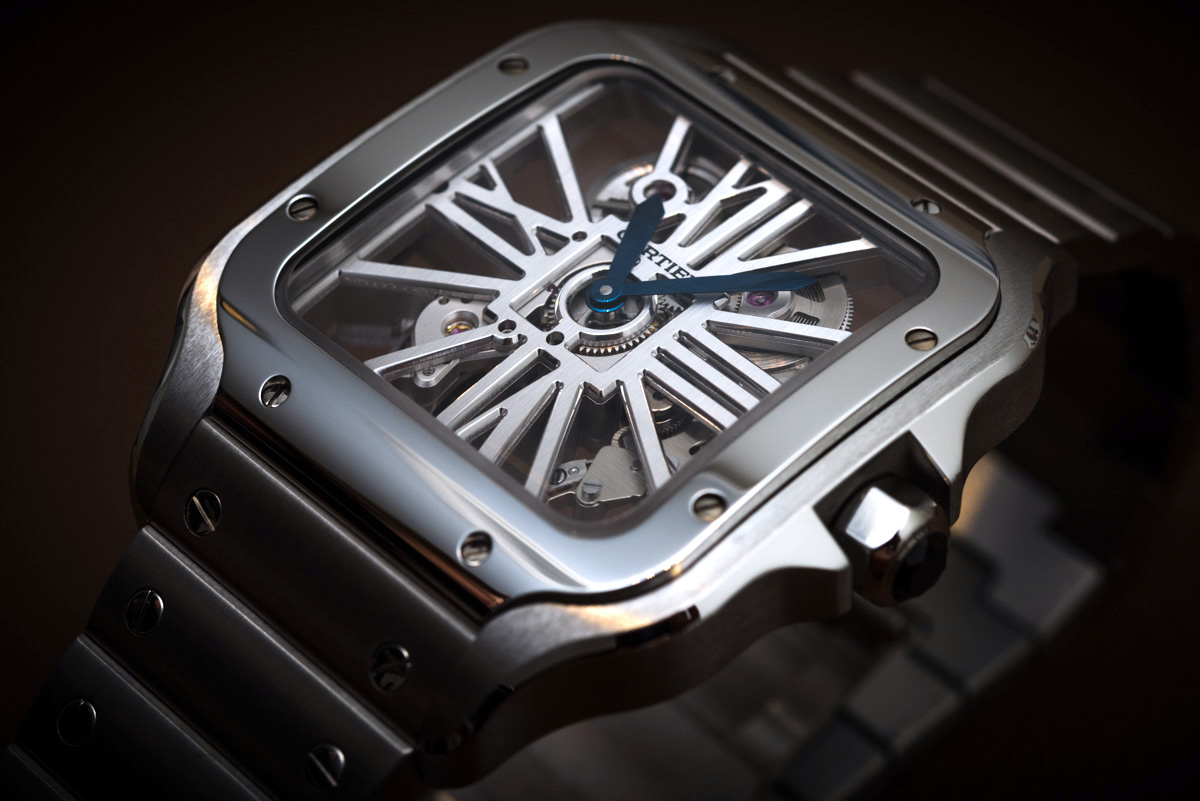
It’s a brute of a watch in terms of size, first impressions, and overall design – but the filigree skeletonized look, I think, would have been a much better match with 2018’s new and most welcome additions of smaller Santos models.
Nevertheless, I think the overall direction that we are seeing here is good and the Cartier Santos De Cartier Skeleton is a step in the right direction. It brings the stupid-expensive look down to the very-expensive price segment – because yes, the latter is somehow below the former in my book. The way the movement was designed from the get-go and then excessively skeletonized indicates a lot of effort, but the creative department should, at least in my opinion, have been a bit more brave with their choice of materials, sizes, and colors. Though, I presume more versions are to come soon enough. I’m just hoping for less brutality and more class from at least one of those.
Price for the Cartier Santos De Cartier Skeleton in steel is $26,800 – and even at that price I’m sure I’ll see a number of these being worn out in the wild soon. cartier.com

